
How to Use Relay: Examples, Pinouts, and Specs
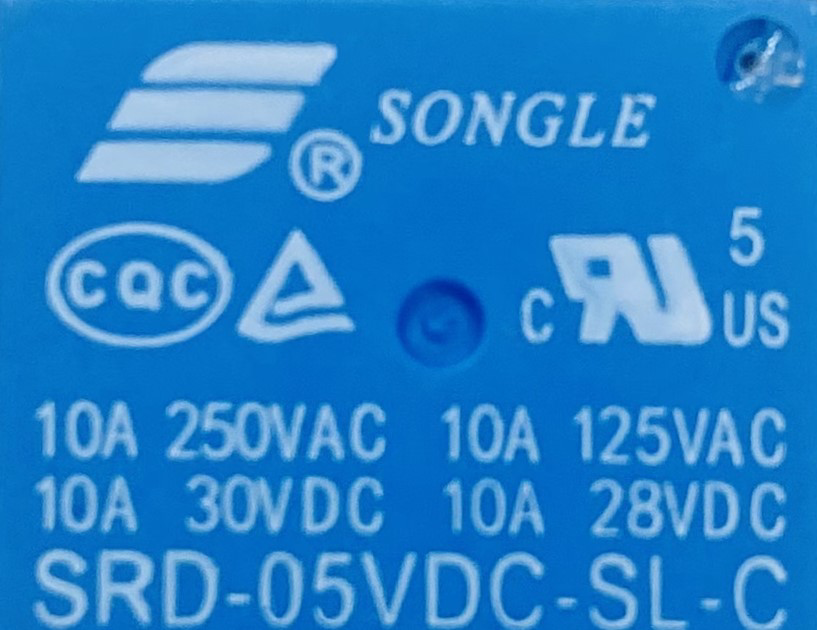
 Design with Relay in Cirkit Designer
Design with Relay in Cirkit DesignerIntroduction
A relay is an electrically operated switch that uses an electromagnet to mechanically operate a switching mechanism. Relays are commonly used in various applications where it is necessary to control a high-power circuit with a low-power signal. They are essential in automation, automotive, and industrial control systems.
Explore Projects Built with Relay
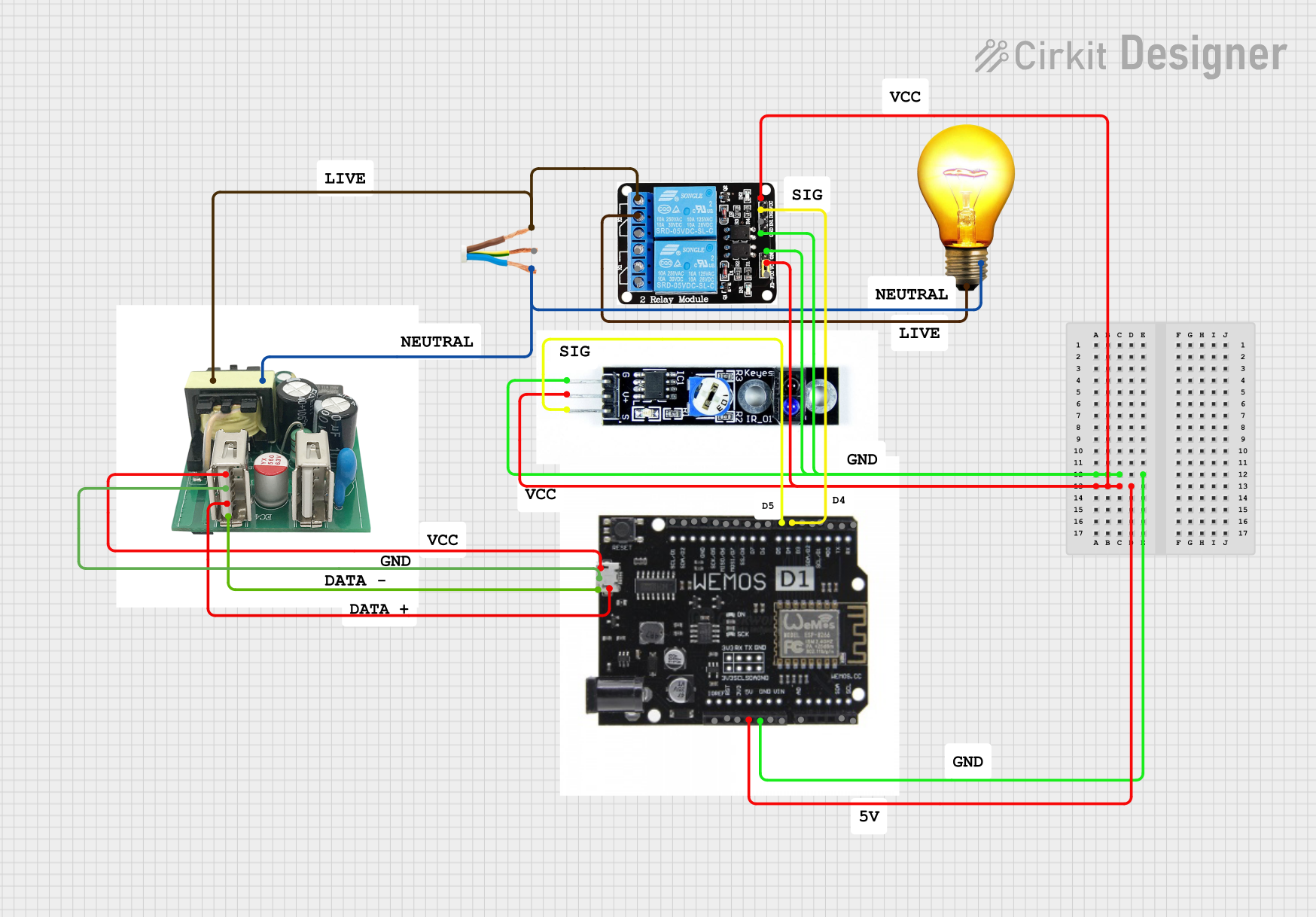
 Open Project in Cirkit Designer
Open Project in Cirkit Designer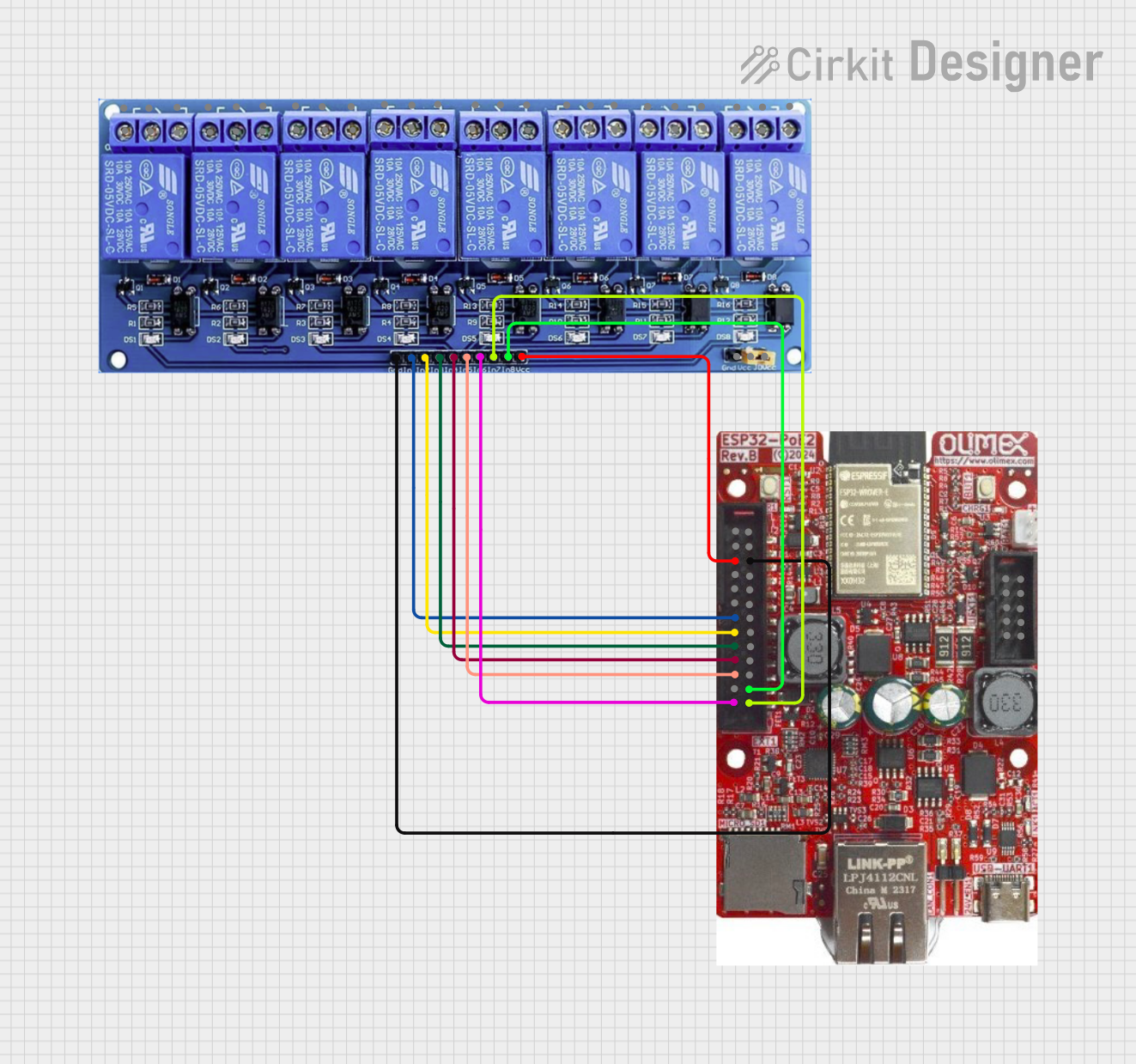
 Open Project in Cirkit Designer
Open Project in Cirkit Designer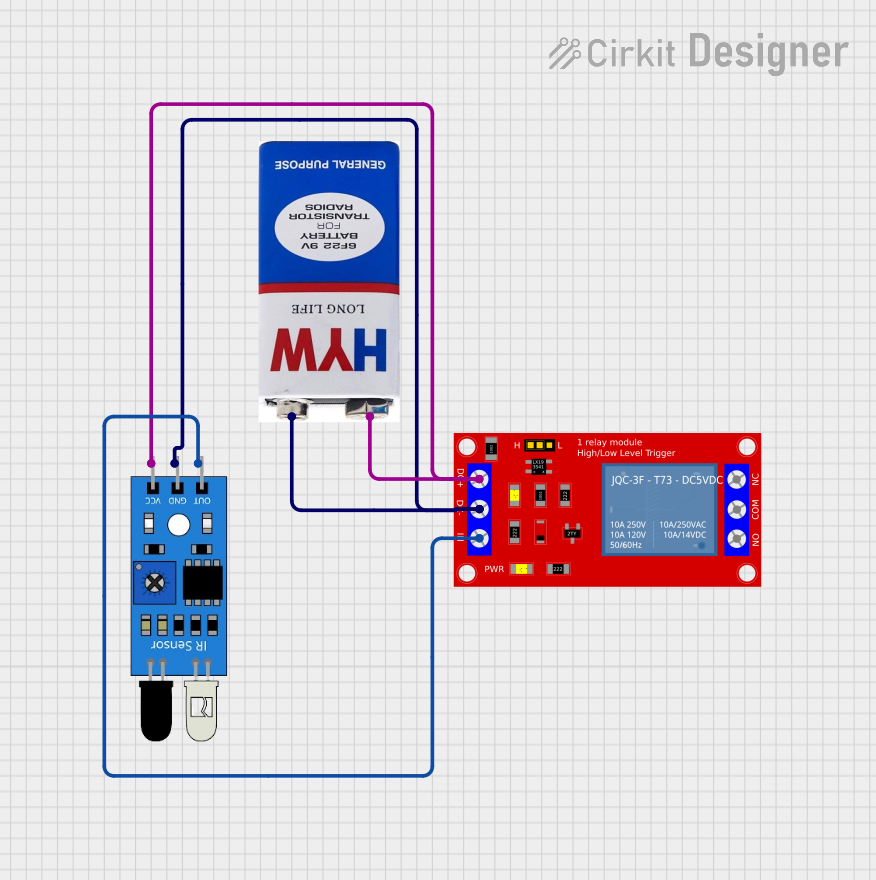
 Open Project in Cirkit Designer
Open Project in Cirkit Designer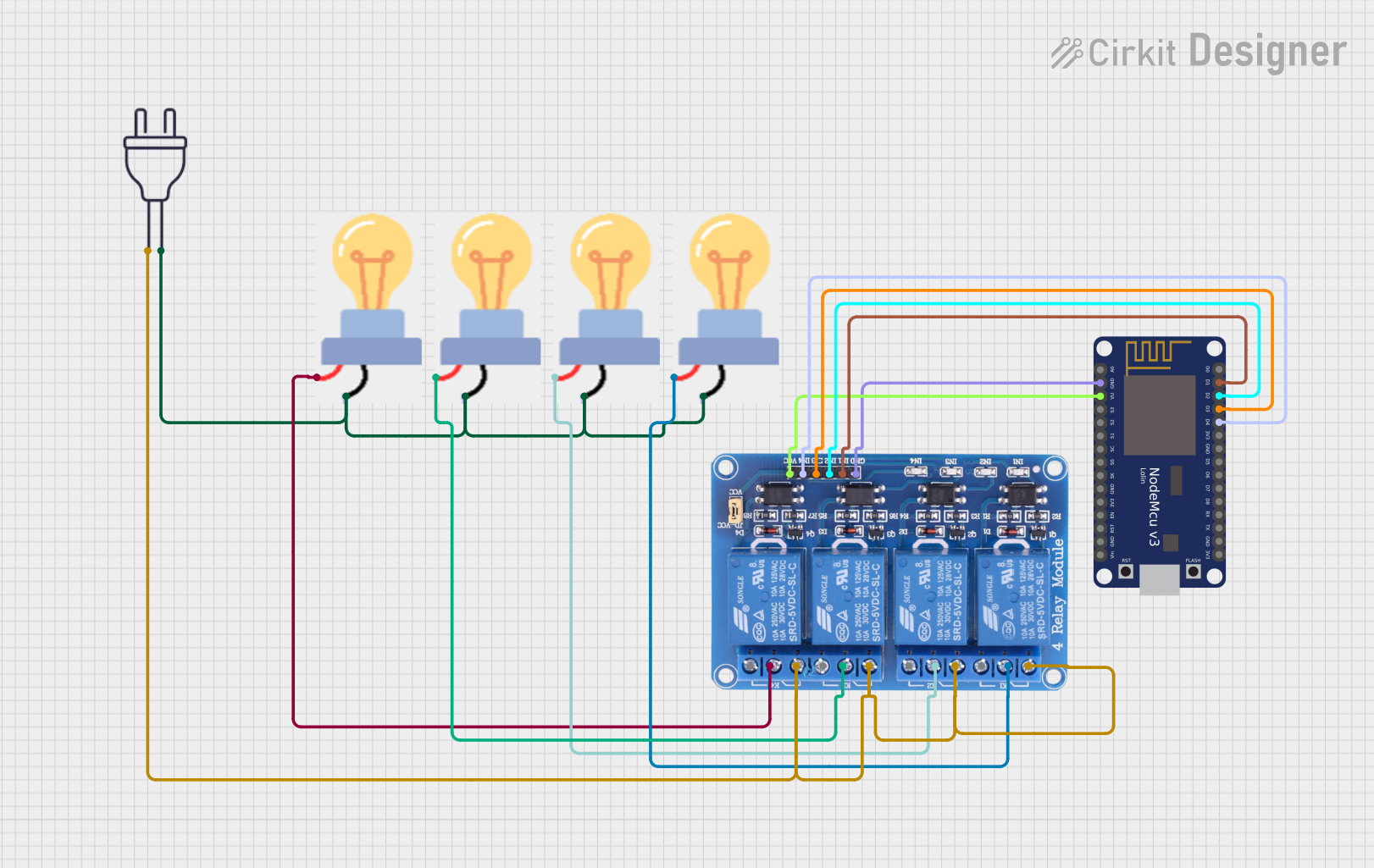
 Open Project in Cirkit Designer
Open Project in Cirkit DesignerExplore Projects Built with Relay

 Open Project in Cirkit Designer
Open Project in Cirkit Designer
 Open Project in Cirkit Designer
Open Project in Cirkit Designer
 Open Project in Cirkit Designer
Open Project in Cirkit Designer
 Open Project in Cirkit Designer
Open Project in Cirkit DesignerCommon Applications and Use Cases
- Home Automation: Controlling lights, fans, and other household appliances.
- Automotive Systems: Switching high-current devices like headlights and horns.
- Industrial Control: Managing machinery and equipment in factories.
- Safety Systems: Isolating different parts of a circuit to prevent electrical faults.
Technical Specifications
Key Technical Details
| Parameter | Value |
|---|---|
| Coil Voltage | 5V, 12V, 24V |
| Coil Current | 70mA (5V), 30mA (12V), 15mA (24V) |
| Contact Rating | 10A @ 250VAC, 10A @ 30VDC |
| Contact Resistance | < 100mΩ |
| Operate Time | 10ms |
| Release Time | 5ms |
| Insulation Resistance | > 100MΩ @ 500VDC |
| Dielectric Strength | 500VAC between coil and contacts |
Pin Configuration and Descriptions
| Pin Number | Pin Name | Description |
|---|---|---|
| 1 | NO | Normally Open contact |
| 2 | COM | Common contact |
| 3 | NC | Normally Closed contact |
| 4 | GND | Ground |
| 5 | VCC | Voltage supply for the coil |
| 6 | IN | Control signal input |
Usage Instructions
How to Use the Component in a Circuit
Power the Relay Coil:
- Connect the VCC pin to the power supply (e.g., 5V, 12V, or 24V depending on the relay).
- Connect the GND pin to the ground of the power supply.
Control Signal:
- Connect the IN pin to the control signal source (e.g., a microcontroller like Arduino).
Switching Circuit:
- Connect the COM pin to the common point of the load.
- Connect the NO pin to the load if you want the circuit to be normally open.
- Connect the NC pin to the load if you want the circuit to be normally closed.
Important Considerations and Best Practices
- Flyback Diode: Always use a flyback diode across the relay coil to protect against voltage spikes.
- Current Rating: Ensure the relay's contact rating matches the load requirements.
- Isolation: Use optocouplers for additional isolation in sensitive applications.
- Heat Dissipation: Ensure proper ventilation to avoid overheating.
Example Circuit with Arduino UNO
/*
* Example code to control a relay with Arduino UNO
* The relay is connected to pin 7 of the Arduino
*/
const int relayPin = 7; // Define the relay pin
void setup() {
pinMode(relayPin, OUTPUT); // Set the relay pin as an output
}
void loop() {
digitalWrite(relayPin, HIGH); // Turn the relay on
delay(1000); // Wait for 1 second
digitalWrite(relayPin, LOW); // Turn the relay off
delay(1000); // Wait for 1 second
}
Troubleshooting and FAQs
Common Issues Users Might Face
Relay Not Switching:
- Solution: Check the control signal voltage and ensure it matches the relay's coil voltage. Verify connections and ensure the power supply is adequate.
Chattering Relay:
- Solution: Ensure the control signal is stable and not fluctuating. Use a capacitor to filter noise if necessary.
Overheating:
- Solution: Ensure the relay is not switching a load beyond its rated capacity. Provide adequate ventilation.
Noisy Operation:
- Solution: Use a snubber circuit across the contacts to reduce arcing and noise.
FAQs
Q: Can I use a relay to switch AC and DC loads?
- A: Yes, relays can switch both AC and DC loads, but ensure the contact ratings match the load requirements.
Q: What is the purpose of the flyback diode?
- A: The flyback diode protects the circuit from voltage spikes generated when the relay coil is de-energized.
Q: How do I know if my relay is normally open or normally closed?
- A: Check the datasheet or use a multimeter to measure continuity between the COM and NO/NC pins.
This documentation provides a comprehensive guide to understanding and using relays in various applications. Whether you are a beginner or an experienced user, following these guidelines will help you effectively integrate relays into your projects.